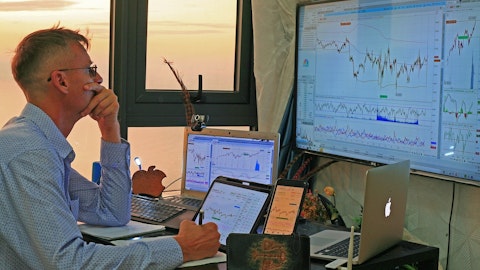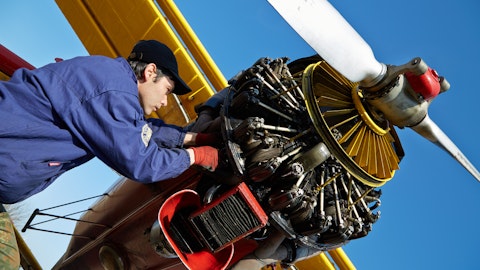There is also a great deal of capability that Triumph has that has taken decades to create and would be near impossible to replicate today. They have an incredible blue-chip customer base, many of which have been there for – with them for decades. So, those relationships are very, very solid, and the proprietary repairs that come through their DERs, they have got over 6,000 DERs. Again, those took years and years to develop, as well as a PMA business that is still relatively small in the scheme of things for Triumph, but years ahead of where we are in PMA, it really jump-starts our PMA efforts there. So, it would have taken a very, very long time and a tremendous amount of capital to replicate what they have. And the margin accretion here is very significant.
If you think about our long-term growth targets in margin, this pulled that forward by a couple of years to get AAR close to our ultimate double-digit goal of operating margins, 10% and beyond.
Bert Subin: Okay. Got it. Maybe just a clarification question there, on the PMA side, is there any sort of granularity you can provide? I know you guys have talked about organically doing that. What does this do for you in that? Is it sort of the similar types of parts that you were looking to do organically, or is this going to be complementary to what you are thinking about doing organically?
John Holmes: It’s complementary to what we think about organically and their PMA efforts are largely focused on interior parts, which comes out of the legacy Triumph Interiors business. And they have got a nice portfolio there and a nice growth plan for the PMA portfolio, but focused on interior parts, which is complementary to where AAR is focused.
Bert Subin: Got it. Okay. And then on the other side of parts, USM, it sounds like you are seeing some positive indicators there. You try to keep the balance sheet in pretty good shape, presumably, to keep acquiring material. Obviously, OEMs have been pricing pretty well over the last few years. And so there is likely, it’s a good spread you can keep getting there. As USM supply comes out, you should still get price. Is that consistent with what you are seeing? And sort of what inning do you think we are in, in terms of the USM recovery?
John Holmes: That is what we are seeing in terms of pricing spreads. And in terms of the innings, I still think we have got a way to go. The delivery rates, the challenges presented by the GTF, all of the indications that we are getting from our customer base is that demand will be strong for some time, which is why we continue to make investments in that business, and which is why you saw an inventory increase this quarter. And going back to Rob’s question around the potential equity instruments, that’s why we want to maintain a flexible balance sheet so that we can continue to be nimble in that market and act when we see opportunities. And obviously, that’s translating to high growth and high margin. So, we still feel that that dynamic has got ways to go.
And then once you do start to see fleets retired and aircraft to be tear down, there will be an even better period where more material is available to ultimately support the continued demand for that material. So, we are looking forward to times when you actually start to see increased retirements and tear down so that we have got access to more assets to fulfill the demand.
Bert Subin: Got it. Okay. Just a final question for me. It seems like the government customers been a source of relative weakness. I think you have pointed out 1% growth relative to ‘24 for commercial. Where are we on that dynamic changing? It sounds like it doesn’t change a ton in 3Q. So, is that what – I think you made the comment, John, high-single digits to low-double digits for sales growth in the fiscal third. Is that why? Is it because that probably stays at that low-single digit range?
John Holmes: Yes, I think you are exactly right. That business right now, obviously characterized by 1% growth year-over-year is relatively stable. There is really two things there. One is our new parts distribution business to the government, this is down considerably from where it was 2 years ago. As we mentioned, that is the dynamic that we see some positive signs in the last few months. We have seen some increase in our bookings there. So, over the back half of this year, we are optimistic that we will see increased government sales volumes out of our distribution business. But the programs business is really the majority of this, as you know, a couple of years ago, with the Afghanistan withdrawal, we saw a down shift. We have had some short-term wins as well as some long-term wins that have offset part of that decline from Afghanistan but not fully.
And the backlog, the pipeline of opportunities that we have in bid with the government right now, they are just very slow to award. So, we remain very confident about the value proposition that we have for the government, and we have got some very meaningful programs out there. We just need them to convert to a win. But to your point, even once they do convert to a win, by the time you clear what will likely be a protest on any one of those and go through a ramp up, it’s unlikely you would see meaningful contribution from any one of those government programs until our next fiscal year.




